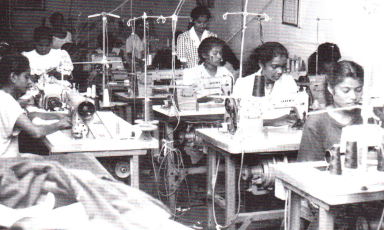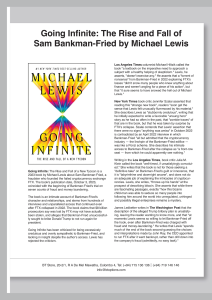by Manori Wijesekera Mack
Sri Lanka has long been regarded as a country producing quota garments, or mass market garments. This notion has been further strengthened by the safety net of a quota system, determined by the Multi Fibre Agreement, which being an agreement between governments, ensures a steady influx of quotas for the garment industry. However, this quota system ends in 2005, a prospect not looked forward to by many local exporters who will have to begin competing on the international apparel market, with no safety nets or crutches supplied either by the government or other organisations.

Another safety net for Textile and Apparel exporters has been the South Asian Preferential Trading Agreement (SAPTA), effective from December 1995. This agreement was adopted at the South Asian Association for Regional Cooperation (SAARC) Summit in Colombo in 1991. Though lower tariff rates made some exporters jubilant at the operation of the Agreement, non-tariff barriers and other trade control measures still exist in the SAPTA.
The Sri Lankan government declared the year 1996 as the Year of Productivity. Clothing, the quarterly magazine of the Clothing Industry Training Institute includes a message from the Minister of Industrial Development, C V Gooneratne, to mark this occasion. In the message, the Minister states that “(productivity) is a process of developing a positive mindset, that there is always scope for improvement and change. The main aim of the productivity campaign is to produce goods and services at a lower cost and of a higher quality and to make them more… competitive in the global market”.
Sri Lanka’s largest foreign exchange earner is heading for big trouble, if much needed changes to the structure of the Garment industry are not made in time. Sri Lanka can no longer be complacent, is the unanimous view of analysts in the industry.
“Product engineering is a must for the garment industry in Sri Lanka. That is the engineering of the workplace to best suit the item of production, ensuring that the production process utilises labour, skill and space in its most efficient form. Many of our factories are not geared for this process, there is no continuation of the production process”, said Mr Malik Samarawickrama, Chairman, Koggala Free Trade Zone Manufacturers Association. “We must also pay greater attention to the marketing of our products, if we are to compete internationally on our own. Sri Lanka is regarded as a quota garment producing country because we market the industry as a quota garment producing industry. If we want to join the up-market garment producing countries, we need to have a total turnaround in our marketing approach.”
Sri Lanka, has long been intent on the volume of the garments exported rather than its quality. This has led to a drop in the standard of textiles and apparels exported, and a drop in the complexity of garment orders coming into the country. In fact, for many analysts, the industry has simply become a large, widespread tailoring shop.
The 200 garment factory programme, begun a few years ago, led to the over expansion of the industry with regard to quota availability. The imposition of wage rates inconsistent with labour productivity and the various conditions in recruitment of labour led to the establishment of uneconomic firms, many of whom will not be able to hold their own once the quota agreement is made dysfunctional in 2005.

“Sri Lanka must be competitive, there is no room for inefficiency. Currently we have the lower end of the international apparel industry, but there is hope if we begin to make the necessary changes early enough”, said Mr. Sunil Seneviratne, General Manager of WRACK Apparels (Pvt) Ltd. Analysts comment that product efficiency, time and method studies and a strict quality control standard are a must if companies want to compete in the global market.
Sri Lanka faces stiff opposition from its Asian compatriots, many of whom have entered the international global market long after Sri Lanka. For example, the United States increased its import of garments by 19 percent in 1995, and of the exporting countries in the Asian region whose quotas increased accordingly were Bangladesh (37%), Thailand (25%) and the Philippines (19%). China, the largest exporter of garments to the United States increased its garment exports by only 12% while Sri Lanka’s increase of exports was 11%.
Bangladesh entered the international garment market as an exporter in the late 1980s. At present the garment industry is Bangladesh’s most lucrative industry earning more than 70 percent of the country’s foreign exchange in 1995. Bangladesh, together with Vietnam, Cambodia and China can offer international investors the advantage of low labour costs. Sri Lanka’s own minimum wage rate, which is not dependant on labour productivity has proved to be a major stumbling block in drawing further foreign investment to the garment industry, and heightened the struggle of companies now in operation to remain a low-cost option for buyers. The minimum wage rate has also been criticised for not varying from region to region, taking into consideration that the cost of living is much lower in some parts of the country than others. This standard minimum wage, which applies to factories anywhere in the island, has deterred employers from giving additional benefits and incentives to those working in high-cost areas like Colombo and its suburbs.
“The minimum wage need not be a deterrent if we are catering to the non-quota garment sector. At present, this sector is being supplied by Central American and East European countries. If the minimum wage is not increased, but is kept at the present level and employers are allowed to base their wage increases and other incentives on productivity, we can turn the garment industry into an efficient option for buyers”, said Mr Samarawickrama.
Those involved in the garment industry are in agreement that Sri Lankan workers are skilled and are quick learners. “Although the design of workplaces may not help in the overall efficiency of production, the speed and efficiency of the labour force ensure product. efficiency in many companies. The skill and learning ability of the workers will prove to be a major advantage as more companies move towards capturing the upmarket, value added garment sector”, said Mr Sunil Seneviratne.
Many Garment industry analysts have noted that there has to be an immediate improvement in the middle management technical force within the industry. One analyst noted that “more technology-oriented training, as well as an in depth knowledge of managerial skills are required if we are to compete with countries far more superior in technology and with a stronger economy.”
Among the value-added garments being exported at present, the value addition of the majority of these garments have been embroidery. Apparel Technologies is one of the foremost proponents of the technology involved in industrial embroidery, and they have watched many buyers and garment manufacturers select the option of value-addition in Sri Lanka. “A few years ago, in fact up until around last year, many garment manufacturers were sending their garments to Hong Kong and Singapore for simple embroidery. Now, many of them are beginning to turn to local embroidery plants, and are beginning to utilise the technology already available in the country”, said Mr Rohan De Silva, Managing Director of Apparel Technologies.
Warner Brothers Inc., the patent and franchise holders of all products featuring Disney characters, came into Sri Lanka a few years ago, and sub-contracted several local companies to manufacture hundreds of Disney characters. Soon however, they were convinced of the feasibility of investing in the local industry, and currently Warner Brothers have their own manufacturing plant, using local skill and technology.
“We need to take every available opportunity to prove that the Sri Lankan garment industry can do more than just tailoring. Our skilled labour force, and the technology which is fast catching up with other, more advanced Asian nations, means that Sri Lankan garment manufacturers can begin to move away from being at the lower end of the international garment industry”, added Mr De Silva.
The absence of an adequate local fabric base, and the high cost of importing almost all the fabric used in the manufacture of garments has also made Sri Lankan garment companies a high cost option. “It is difficult for Sri Lanka to compete with international textile manufacturing countries, such as China, although there are a few semi-government and private companies manufacturing cotton fabric. I think Sri Lanka can look towards being an international trader in textiles, like Hong Kong especially as we are located in the centre of international air and shipping routes”, said Mr De Silva.

“We need to take every available opportunity to prove that the Sri Lankan garment industry can do more than just tailoring”.
Other accessories, such as zippers, buttons and shoulder padding continue to be imported from countries such as Singapore and Hong Kong. The Board of Investment (BOI) of Sri Lanka is currently attempting to market the country as a viable option for investment in the area of garment accessories. “It is usually the buyer who chooses the fabric and accessories, and unless Sri Lanka succeeds in wooing international brands into the country, the buyers will prefer to use the brands they are familiar with and whose quality they can trust, than give the order to a local firm with little or no prior experience”, said Mr Malik Samarawickrama.
Garment manufacturers note that the infrastructure to improve and enhance the industry is inadequate, at best. The improvement of the telecommunication network tops the list, and close upon it comes a revision of the current tax structure. “I think the garment industry has all the manufacturers it can hold at present. This will change after 2005, with the industry decreasing to contain only those who remain competitive in an open market environment. So rather than attempting to attract further foreign or local investment in the garment industry, it is more urgent to improve the standard and reliability of the infrastructure for the industry”, said Mr Samarawickrama.
The last Annual General Meeting of the Sri Lanka Apparel Exporters Association (SLAEA) held in November 1995, highlighted the gap. between Board of Investment (BOI) and non-BOI companies in the garment industry. The outgoing Chairman of the SLAEA, Mr Stanley Amarasekera, noted that “…non-BOI garment factory owners have to endure numerous hardships while BOI factories have huge benefits. The non- BOI sector continues to pay higher rates of bank interest (20 percent to 30 percent against the 8 percent to 10 percent available to other sectors of the garment industry), able opportunity to prove that the garment labours under time consuming and costly import/export procedures, pays 15 percent to 20 percent more for basic inputs, including items such as needles and thread, face “bottlenecks” in clearing duty. rebate application, spend more time on administrative duties rather than on production and marketing”. Mr Amarasekera also added that the discrimination between BOI and non-BOI companies, “can be easily and quickly resolved if a sincere effort is made”. However, little action has been taken by the government on this issue, and garment manufacturers continue to chaff at this obvious discrimination.
Although the woes of garment manufacturers in the country are many, they continue to be hopeful that Sri Lanka can become competitive, foster an up-market garment industry and face the year 2005 and the removal of the quota agreement, as a strengthened industry able to make a substantial impact on the economy.






